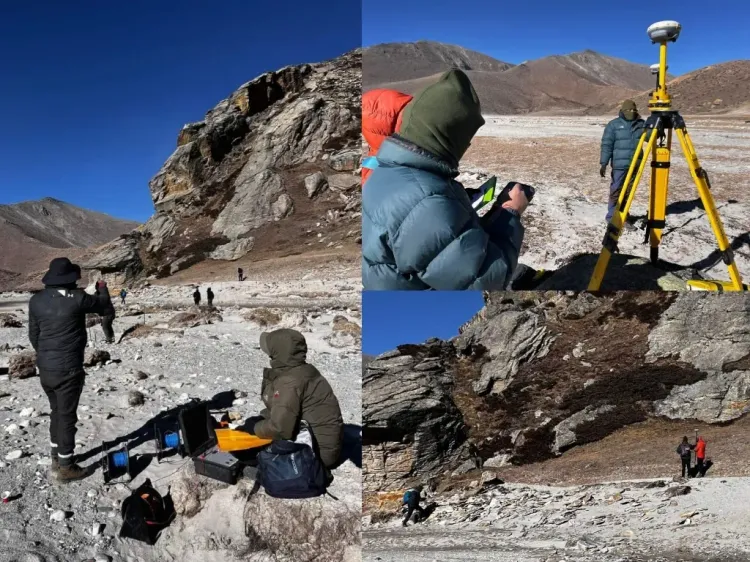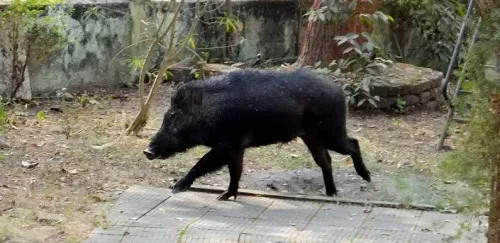Research Team Arrives in Sikkim's Lhonak Valley to Investigate High-Risk Glacial Lakes

Gangtok, Dec 2 (NationPress) To protect downstream communities from the dangers posed by potential Glacial Lake Outburst Floods (GLOFs) in Sikkim, a research team has successfully reached the Lhonak Valley, which is located at an altitude exceeding 17,000 feet, to carry out a comprehensive study, as reported by officials on Monday.
The Lhonak Valley is a Trans-Himalayan grassland situated in the exposed river valley of Goma Chu within the northwestern region of the mountainous state.
A senior official stated, “The current research initiatives are anticipated to enhance glacial flood modeling, offer critical insights into subsurface geology, and guide the construction of effective retention structures to protect downstream communities from potential Glacial Lake Outburst Floods (GLOFs).”
An official announcement highlighted that on the fifth day of the expedition, the team set off from Thangu Army Camp early in the morning, traversing the Lugnakla Pass (17,000 ft) to reach the Muguthang Indo-Tibetan Border Police (ITBP) camp. From there, they continued to Dolma Sampa in Lhonak Valley to assess the feasibility of a proposed retention structure aimed at reducing future glacial flood risks.
“The expedition's focus on Dolma Sampa is due to the valley's unique geometry. The Goma Chu River flows through the Lhonak Valley, characterized by its distinct topography. Below South Lhonak Lake, the valley constricts and takes an S-shaped curve at Goma, functioning as a natural speed breaker against potential glacial floods,” it was further explained.
Beyond this area, the valley expands into an gently inclined zone known as Dolma Sampa -- a flat region measuring one km in width and three km in length. The research aims to evaluate whether Dolma Sampa is an appropriate location for a retention structure, as the upper valley acts as a natural barrier for debris and floodwater.
According to officials, preliminary observations regarding debris deposition patterns from the glacial flood on October 3, 2023, suggest that larger materials like boulders accumulate in the upper sections of Dolma Sampa, indicating its potential viability as a retention site.
With assistance from the ITBP, the team commenced thorough investigations at Dolma Sampa, which included subsurface geophysical studies, debris deposition assessments, and measurements of 2023 glacial flood levels. Despite the harsh conditions -- with temperatures dropping to zero degrees Celsius by noon and plummeting to minus 10 degrees Celsius overnight -- strong winds and rugged terrain, the team accomplished their fieldwork for the day, as reported by officials.










